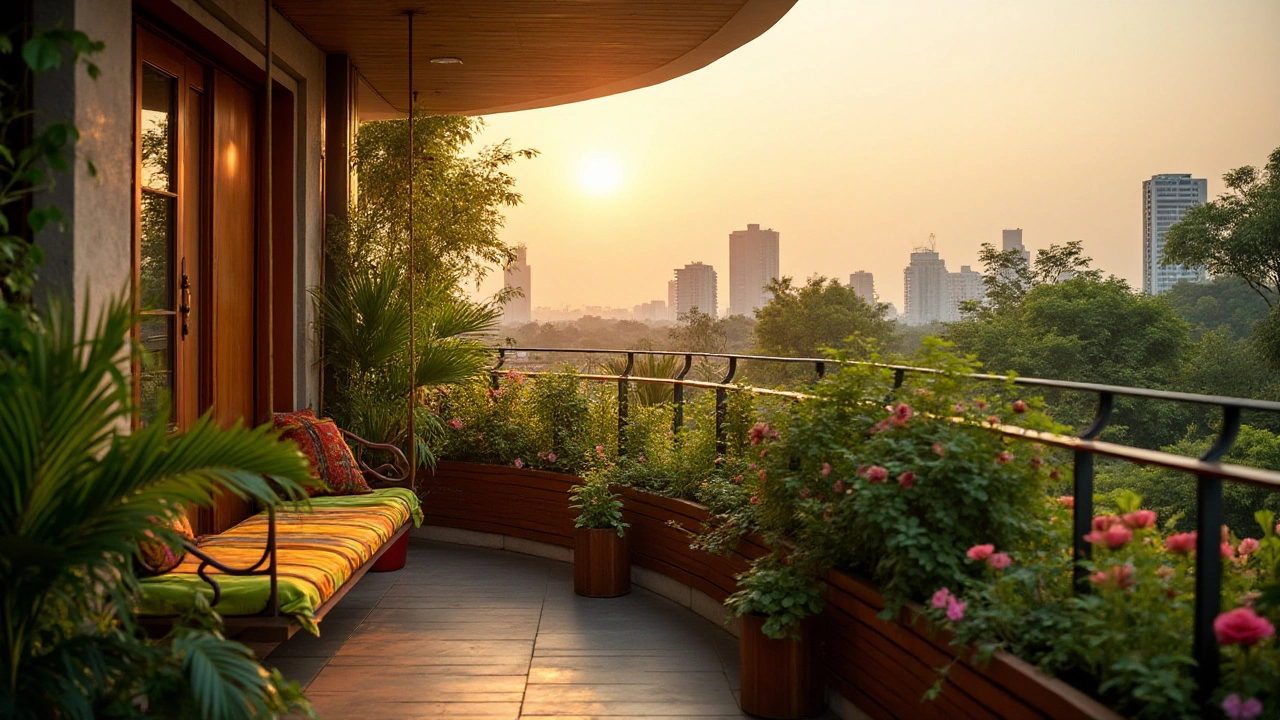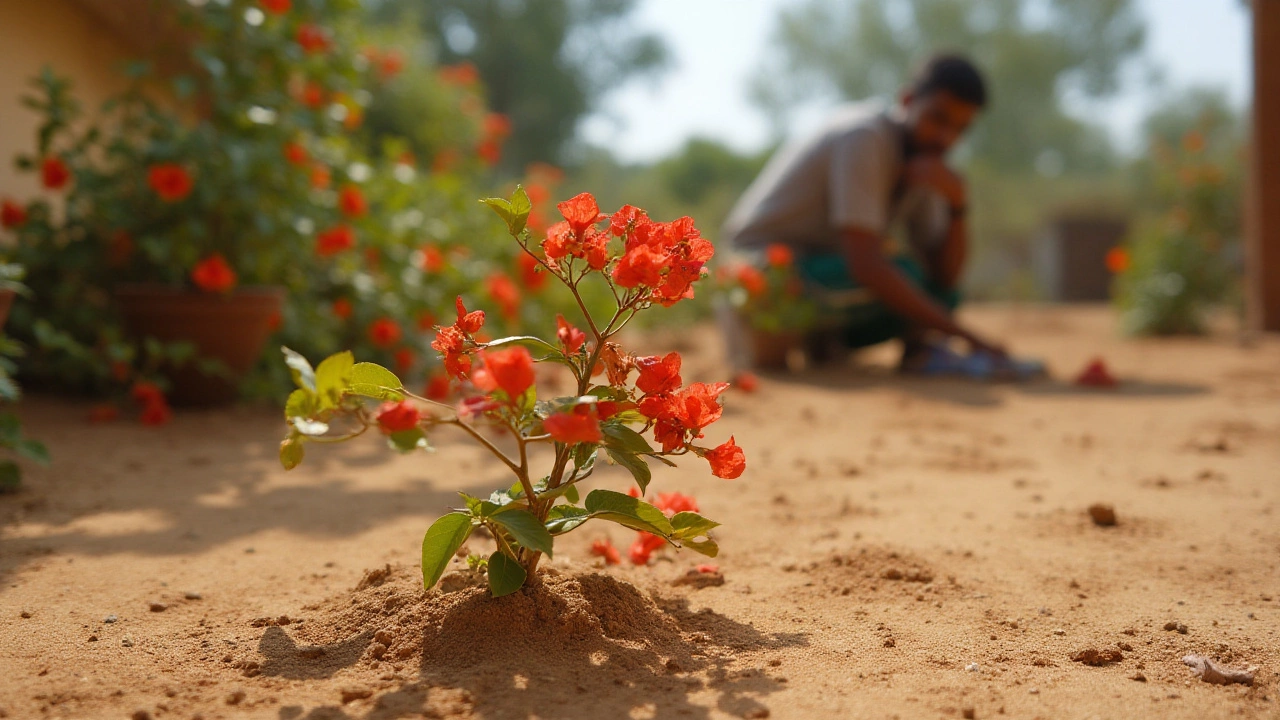Balcony Direction: How Sunlight Shapes Your Container Garden
When working with balcony direction, the way a balcony faces north, south, east or west. Also known as balcony orientation, it decides how much light, heat and wind your pots will face each day. This matters because sunlight exposure, the amount of direct or indirect sun a spot gets directly drives photosynthesis, water loss and growth speed. Pair that with container garden, a collection of plants grown in pots, trays or bags rather than in ground, and you see why the right orientation can mean the difference between thriving foliage and a wilted mess.
Key factors to consider when you size up your balcony
First up, the sun path. A south‑facing balcony in India usually basks in full sun for 6‑8 hours, perfect for heat‑loving veggies like tomatoes, chillies and sunflowers. East‑facing spots get a gentle morning glow, great for herbs that dislike scorching afternoons—think basil, mint and coriander. West‑facing decks soak up late‑day heat, which can stress delicate blooms but works for fruiting plants that need a warm boost before night. North‑facing balconies are the shade champions; they’re ideal for foliage plants, ferns and shade‑tolerant flowers like impatiens. Remember, balcony direction influences not just light but also temperature swings and wind exposure.
Second, wind. Open balconies catch breezes that can dry soil quickly, especially on higher floors. If your balcony faces a prevailing wind, you’ll want windbreaks—bamboo screens, lattice panels or tall grasses—to keep moisture from evaporating too fast. On the flip side, a wind‑sheltered nook (often a north‑facing corner) may hold onto humidity, which is a boon for tropical plants but a risk for fungus if you overwater.
Third, watering strategy. The posts in this collection, like the guide on daily watering and the drip‑irrigation DIY, all stress that you need to match your watering schedule to the light and wind you get. A south‑facing balcony may need a light soak every other day, while a north‑facing one can stretch to three‑day intervals. Using drip irrigation, a low‑flow system that delivers water directly to the pot’s soil under mulch can smooth out those differences, conserve water and keep roots moist without waste.
Fourth, soil moisture retention. The soil mix you pick should echo the micro‑climate created by your balcony direction. For sunny balconies, a gritty, well‑draining blend (coarse sand, perlite and compost) prevents soggy roots. For shady balconies, you can add more organic matter, coconut coir or peat to hold water longer. This ties directly into the no‑till gardening article, which shows that respecting the natural soil structure helps retain moisture regardless of sun exposure.
Fifth, plant selection. Each plant has a light‑requirement rating—full sun, partial shade or full shade. Match that rating to your orientation. The “easiest flowers to grow” piece recommends marigolds and petunias for sunny spots, while impatiens and begonias shine in shade. Herbs like rosemary love dry heat, whereas parsley prefers cooler, filtered light. By aligning plant needs with balcony direction, you cut down on pest problems, reduce the need for artificial lighting and keep your garden low‑maintenance.
Sixth, space planning. Because balconies are limited, you’ll often stack vertically. Use hanging baskets, wall‑mounted planters or tiered shelves to maximize the area that receives optimal light. For example, place taller sun‑loving plants at the back of a south‑facing balcony, and keep shade‑tolerant groundcovers in front where they get dappled light. This layout trick is echoed in the “breaking up a large garden” guide, which emphasizes zoning spaces based on light levels.
Finally, seasonal shifts. In winter, the sun sits lower, and a balcony that felt bright in summer may turn into a cool corner. Adjust by rotating pots, swapping annuals for winter greens, or adding reflective surfaces (white boards, mirrors) to bounce extra light onto the plants. Keeping an eye on seasonal changes ensures your container garden stays productive year‑round.
All of these points—sun path, wind, watering, soil, plant choice, layout and seasons—form a web of relationships that the articles below explore in depth. Whether you’re figuring out how often to water a container garden, setting up a drip‑irrigation system, or just picking the easiest flower for your balcony, the right direction is the foundation you’ll build on.
Below you’ll find a curated set of guides that walk you through each of these aspects, from testing soil moisture on a sunny deck to choosing shade‑loving foliage for a north‑facing nook. Dive in to get practical tips, real‑world examples and step‑by‑step instructions that match the balcony direction you’re working with.
Optimal Balcony Directions for Sunlight in Your Garden
Discovering the right direction for your balcony to get ample sunlight can significantly enhance your gardening efforts, ensuring your plants not only survive but thrive. This article explores the impact of balcony orientation on sunlight exposure and provides practical tips on making the most of your available space. By understanding the specific needs of your plants and the sunlight patterns in your area, you'll learn how to optimize your balcony as a flourishing green sanctuary. Whether you're a seasoned gardener or a novice enthusiast, these insights could help you cultivate a vibrant balcony oasis.
- manufacturing
- India
- food processing
- garden tips
- rice cultivation
- government schemes
- balcony garden
- urban gardening
- balcony gardening
- profitable business
- business ideas
- plastic manufacturing
- drip irrigation
- plant care
- steel manufacturing
- sustainable gardening
- startup ideas
- steel industry
- flower gardening
- textile manufacturers






